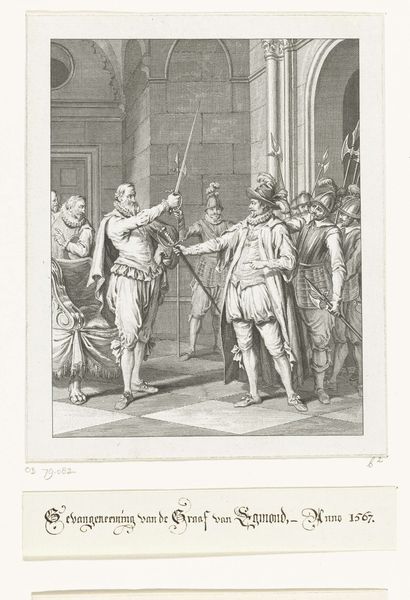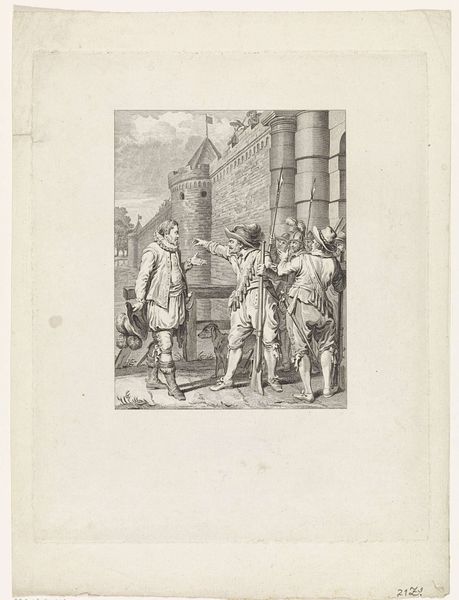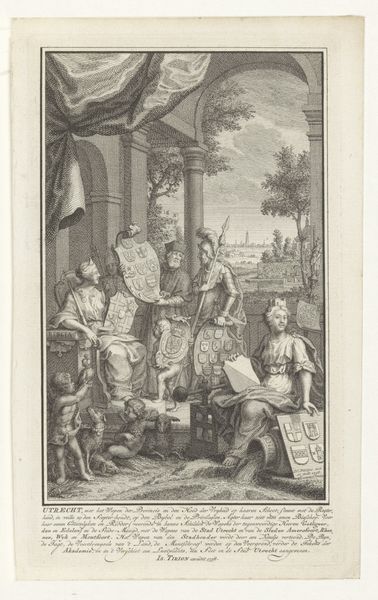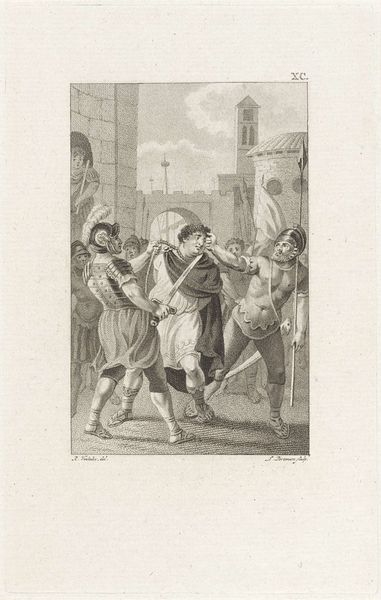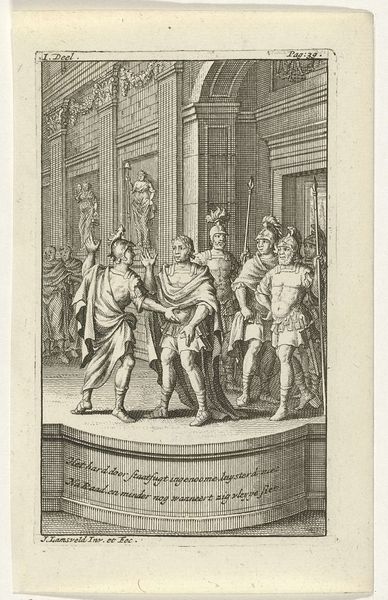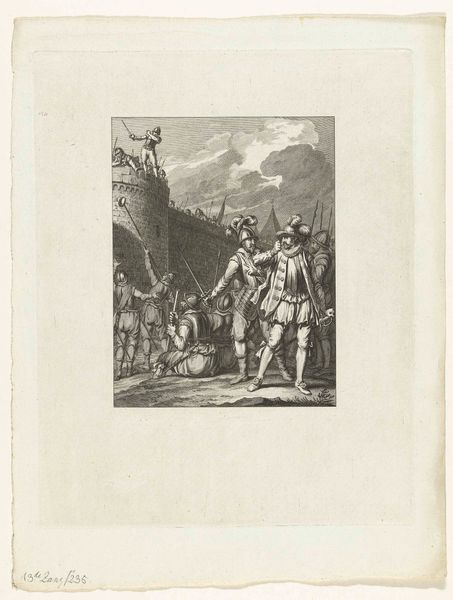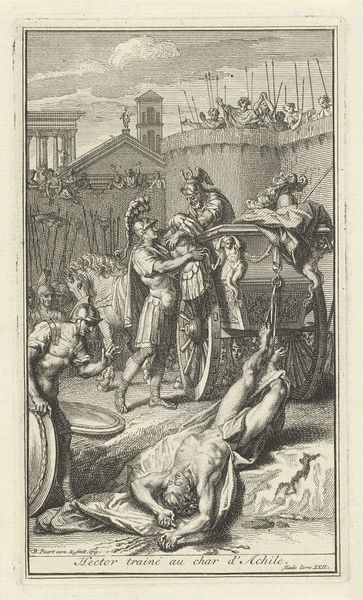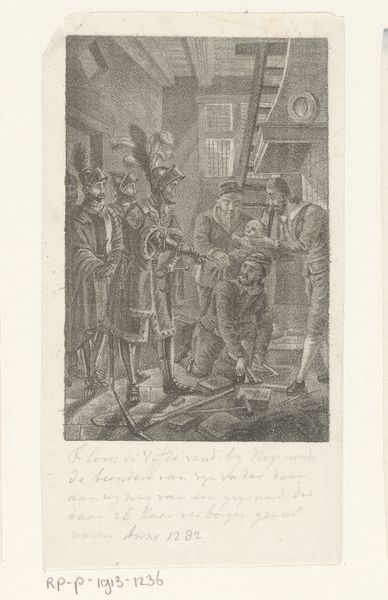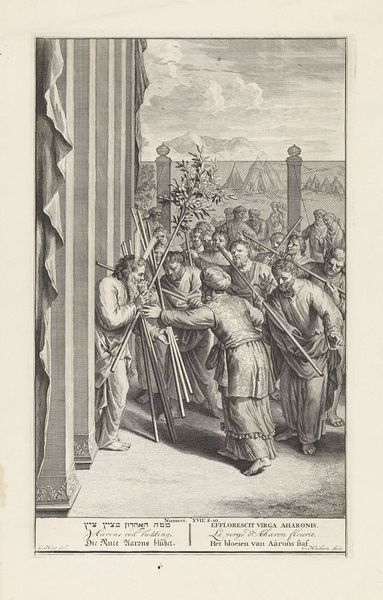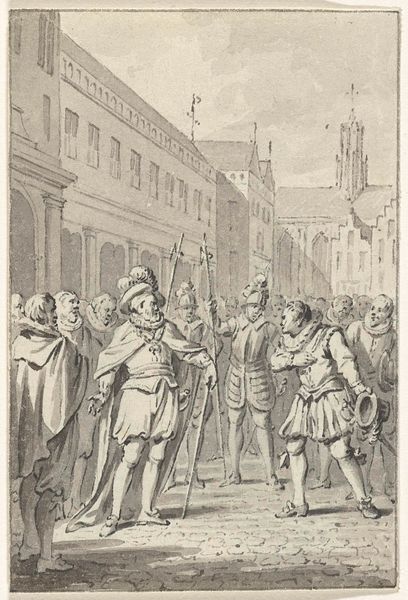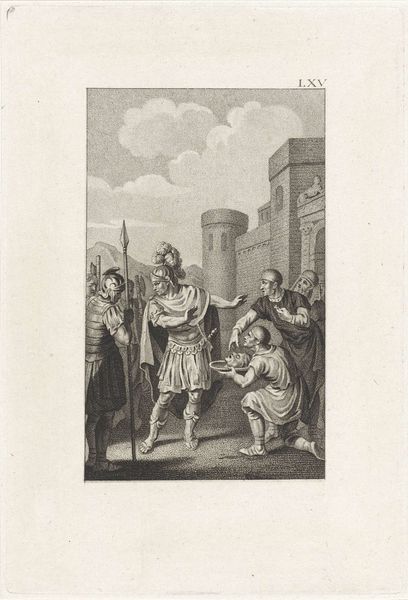
Dimensions: height 185 mm, width 150 mm
Copyright: Rijks Museum: Open Domain
Curator: I’m immediately drawn to the intricate lines and textures within this print. There’s a crispness that belies its age. Editor: Indeed. This is "Oranje bezoekt alleen het opstandige Gent, ca. 1579" by Cornelis Brouwer, dating back to 1788. It captures a specific historical moment, William of Orange's visit to Ghent. The way the scene is constructed – with the fortifications looming in the background, the armed guards, and the contrast between Orange and his welcomers – speaks volumes about power dynamics. Curator: Absolutely. I see how the engraving technique itself, this meticulous carving, relates to ideas of control and precision valued in both art production and sociopolitical administration. The fine lines forming the architecture must have demanded skill to carve into the metal, while the composition clearly highlights the architecture and weapons. What can you say about how the materials speak to this theme? Editor: Looking at the materials through the lens of production, this print, likely disseminated widely, aimed to shape public perception of a significant event in Dutch history. Consider the socioeconomic and historical context: a period of political tension. The print acts as visual propaganda and can speak to the struggles between autonomy and submission of the rebellious cities of the Low Countries. The way that Brouwer uses space and perspective within this work directs our gaze toward specific elements – those imposing fortifications representing resistance. The arrangement and costuming of those in the group adds to the implied political dynamic. Curator: Right, so the medium wasn't merely a conveyor of information but actively engaged with the crafting of a historical narrative for consumption. Even down to the costume-making itself: from fabrics, to the dyes needed to create these garments – those materials are embedded in the production of national identities! I’m interested in Brouwer's line work – particularly in rendering Orange’s expression compared with the gesticulating officer. It seems softer than that of his counterpart. Editor: Yes, and note the gaze and hand gestures; it seems to underline the fraught dynamic that must have occurred. What this visit might have symbolized, given Ghent’s rebellious stance. Curator: So the piece serves as a material record, bearing traces of not only a historical event, but of cultural tensions and artistic strategies. Editor: Exactly. Understanding its historical production and context helps unlock layers of meaning. Brouwer's work functions as more than mere reportage, entering debates about cultural identity and authority. Curator: This has highlighted not only the image before us but how we engage with it, appreciating both its construction and cultural impact.
Comments
No comments
Be the first to comment and join the conversation on the ultimate creative platform.
